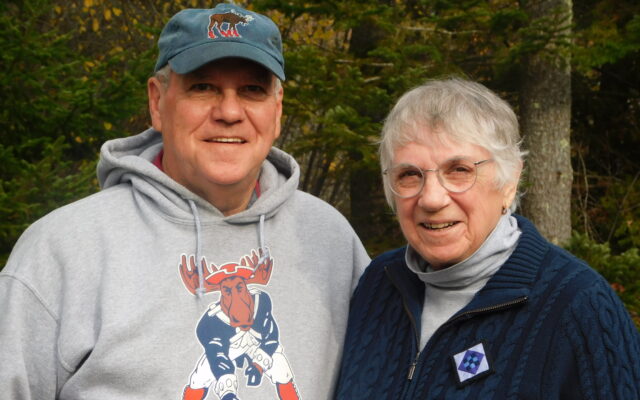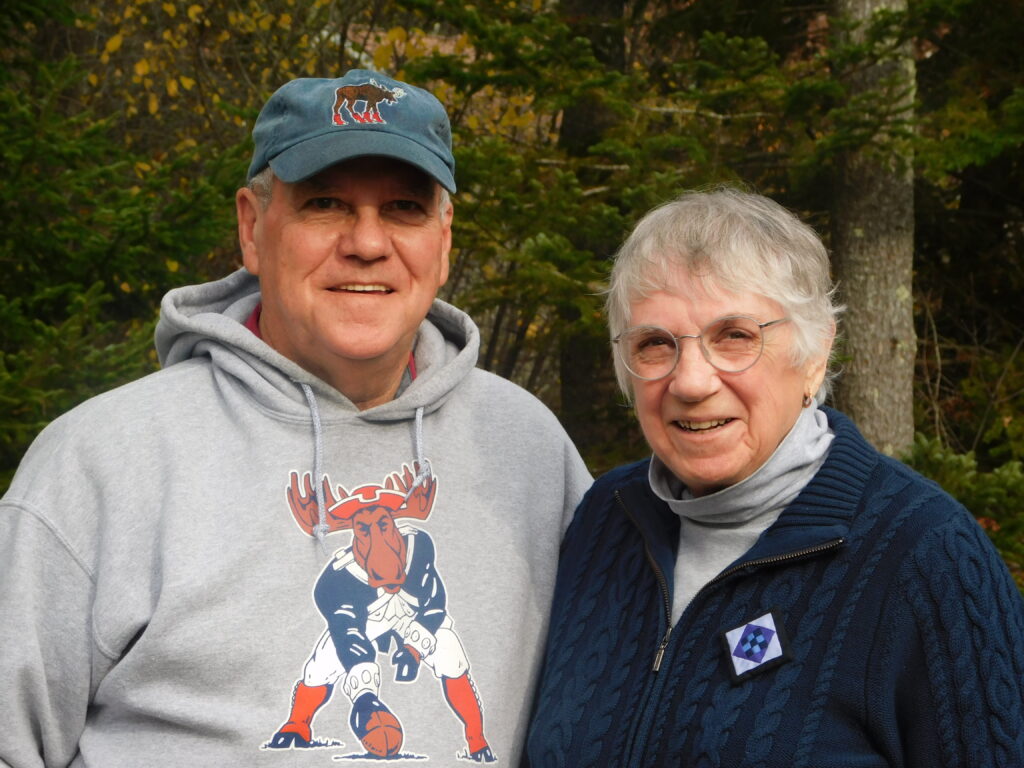
Maine’s public houses contributed to the Revolution and advanced women’s right to vote
By Paula Brewer, Star Herald Staff
John Adams held court in Wiscasset, Daniel Webster visited Bucksport and men planned the Revolutionary War’s first naval battle in Machias — all thanks to common public houses, or taverns.
When small villages were connected only by bad roads, if at all, local taverns were spots to socialize, share food and drink and conduct business. And business in those days often involved prominent figures talking about revolution and the colonies’ independence from Great Britain.
That’s what hooked historians Bill and Kathy Kenny, former Caribou residents who now live in Cumberland, when they began to explore the state’s gathering places. Their book “Historic Taverns and Tea Rooms of Maine” was released May 31 by The History Press.

TAVERN/TEA ROOM HISTORY — Bill and Kathy Kenny of Cumberland recently released their book “Historic Taverns and Tea Rooms of Maine.”
“We were driving around one day and kept seeing these buildings that were decrepit, and discovered some of them were taverns or tearooms,” Kathy Kenny said.
From colonial days, taverns were bastions of business, trade and politics, and hosted significant men at meetings where wars and victories were planned. Tearooms came into vogue in the 19th century, run by women, for women, and became launching pads for women’s suffrage and the temperance movement.
The couple delved into how these gathering spots shaped Maine society and were fascinated to learn about their famous visitors.
“Each tavern or tea room listed [in the book] usually has someone very prominent that stayed there,” Kathy Kenny said.
Among the historical figures who visited Maine’s watering holes were Adams, then a traveling court judge. Webster, Jefferson Davis, Andrew Jackson and John Tyler stayed at the Jed Prouty Tavern in Bucksport. The Marquis de Lafayette visited Captain Seth Spring’s Tavern in Biddeford. Franklin and Eleanor Roosevelt were guests at establishments in Wells and Yarmouth.
Tearooms hosted prominent suffragettes such as Alice Vanderbilt, Susan B. Anthony and Julia Ward Howe, originator of “The Battle Hymn of the Republic.”
Most villages had a tavern, according to Bill Kenny. From about the mid-1600s to 1720s, when Maine was part of Massachusetts, taverns were where mail was held and picked up and where people met to discuss commodity pricing, politics and even do their banking.
“During the Revolutionary War, Maine was significant,” Bill Kenny said. “The Burnham Tavern still exists — it’s now a museum — and one of the first battles of the Revolutionary War was initiated there.”
It was at William Everett’s Tavern in Eliot in 1652 where Maine decided to remain part of Massachusetts, he said, and in 1820, state officials allegedly signed papers at the Jameson Tavern in Freeport that designated Maine as a separate state.
A chapter on alleged haunted locations includes the Greenville Inn.
Aroostook County had the Reed Tavern in Presque Isle and the Blackhawk Putnam Tavern in Houlton. The Reed was actually the first lodging house in Presque Isle and was built in 1840 on the land where the Northeastland hotel is today, Bill Kenny said.
A history of Presque Isle by Philip Pendell, published in the Jan. 1, 1940, Bangor Daily News, recounted: “Leonard Reed floated his family and household goods down the Aroostook River from Masardis on a raft. Unloading and going to work, he built Presque Isle’s first hotel, known as the Reed Tavern.”
A fire in 1884 burned the tavern to the ground, which made way for the Presque Isle House — the Northeastland’s predecessor.
“One of the other significant taverns in Aroostook County was the Blackhawk Putnam Tavern in Houlton, which is Aroostook County’s oldest standing building,” Bill Kenny said. “Blackhawk Putnam was a veteran of the Civil War.”
The tavern also served as a courthouse, hosting several district court sessions, and is listed on the National Register of Historic Places. The building, on North Street, now houses A New Start, a mental health and case management agency.
Tearooms, designed specifically for women, came along in the mid-1800s and embodied more of a social purpose.
“They were a great influence on the community and the culture of the time. Their aim was to provide a respectable, elegant environment for women to be able to go out and have lunch or tea without the accompaniment of a man,” Kathy Kenny said.
In tearooms, women could meet with the cultural movers and shakers of the day, and the establishments offered women a career alternative to being a governess or schoolteacher.
At the tearoom at Stanwood Park in Farmington, Isabel Whittier Greenwood — the wife of Maine earmuff and whistling teakettle inventor Chester Greenwood — would give talks encouraging women’s right to vote. The National Grange supported women’s suffrage because of her influence, according to Kathy Kenny.
Because they focused on women, tearooms were perfect venues for suffrage promoters to visit. Some establishments even had dinnerware with slogans like “Votes for Women.”
“The temperance movement was springing up all around the country. One of the things they liked about tearooms was that they didn’t have to sit where other customers might be imbibing in alcohol,” she said.
Some tearooms would put a sign in the window with just the letter “T” — code for temperance.
Restaurant practices still common today began in tearooms, such as hiring college girls as waitresses, dining outdoors and using candles and flowers on the tabletops.
“They started using colorful names to replace common family names — instead of ‘Smith’s Tearoom’ it was now ‘The Green Apple,’” Kathy Kenny said.
They also boosted tourism, as it became fashionable to design tours to visit several tearooms. And in a nod to fashion, they prompted the creation of tea gowns — more comfortable and looser fitting than corseted dresses, she said.
Bill Kenny is the author of the 2020 book “A History of Maine Railroads,” for which Kathy was the primary editor, but “Historic Taverns and Tearooms of Maine” is the couple’s first co-written title.
“And our marriage stayed together in spite of it. My wife is smiling,” Bill Kenny quipped.
He is a retired U.S. Air Force major who was stationed at Loring Air Force Base in the 1980s. Kathy Kenny is a librarian, having served in various libraries as the couple moved around for the military. While in Caribou, she worked at Crafts Elan, and as a quilt historian has also given talks at Madawaska, Van Buren, Presque Isle and Houlton. Their book is available at local bookstores or from their website, historymaine.com, which also lists upcoming book talks and signings.